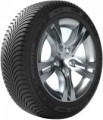Load index
The maximum weight load that the tyre is able to carry. It is denoted by a conditional figure, each of which corresponds to a certain value:
66 - 300 kg, 67 - 307 kg, 68 - 315 kg, 69 - 325 kg, 70 - 335 kg, 71 - 345 kg, 72 - 355 kg, 73 - 365 kg, 74 - 375 kg, 75 - 387 kg, 76 - 400 kg, 77 - 412 kg, 78 - 425 kg, 79 - 437 kg, 80 - 450 kg, 81 - 462 kg, 82 - 475 kg, 83 - 487 kg, 84 - 500 kg, 85 - 515 kg, 86 - 530 kg, 87 - 545 kg, 88 - 560 kg, 89 - 580 kg, 90 - 600 kg, 91 - 615 kg, 92 - 630 kg, 93 - 650 kg, 94 - 670 kg, 95 - 690 kg, 96 - 710 kg, 97 - 730 kg, 98 - 750 kg, 99 - 775 kg, 100 - 800 kg, 101 - 825 kg, 102 - 850 kg, 103 - 875 kg, 104 - 900 kg, 105 - 925 kg, 106 - 950 kg, 107 - 975 kg, 108 - 1000 kg, 109 - 1030 kg, 110 - 1060 kg, 111 - 1090 kg, 112 - 1120 kg, 113 - 1150 kg, 114 - 1180 kg, 115 - 1215 kg, 116 - 1250 kg, 117 - 1285 kg, 118 - 1320 kg, 119 - 1360 kg, 120 - 1400 kg, 121 - 1450 kg, 122 - 1500 kg, 123 - 1550 kg, 124 - 1600 kg, 125 - 1650 kg, 126 - 1700 kg, 127 - 1750 kg, 128 - 1800 kg, 129 - 1850 kg, 130 - 1900 kg, 131 - 1950 kg, 133 - 2060 kg.
While choosing according to this indicator, it is worth considering not only the maximum weight of the car for which tyres are going to buy, but also the distribution of weight along the axles. With passenger cars, everything is simple — the weight is distributed approximately equally, so to determine the load on each wheel, it is enough to divide the maximum mass of the car by 4 (the number of wheels). H...owever, in minibuses, light trucks and SUVs, the situation is different: the weight distribution can be unequal, so you should refer to the manufacturer's documents or other special sources to calculate the load on each wheel.
Anyway, the load index must not be exceeded — this creates the danger of an accident. In fact, the wheel load should be at least 10 – 15% below the maximum, this will give an additional guarantee in case of abnormal loads. Also note that in some high-speed tyres, with the speed maximum approaching, the permissible load decreases: for example, for tyres with the V index (see "Speed rating") with speed over 210 km/h, it is recommended to reduce the load by 3% for every next 10 km/h increase in speed, similar recommendations apply to models with indexes W and Y. These details are usually described in the manufacturer's documentation and other special sources.
Speed rating
The speed rating that the tyre corresponds to.
This indicator determines the maximum speed that tyre is allowed to operate. It is designated by the letters of the Latin alphabet, each of which corresponds to a certain speed limit:
F — 80 km/h; G — 90 km/h; J — 100 km/h; K — 110 km/h; L — 120 km/h; M — 130 km/h; N — 140 km/h; P —
150 km/h ; Q —
160 km/h ; R —
170 km/h ; S —
180 km/h ; T —
190 km/h ; U —
200 km/h ; H —
210 km/h ; V —
240 km/h ; W —
270 km/h ; Y —
300 km/h ;
The maximum permitted speed must not be exceeded — this creates the risk of an accident. However, there are other rules associated with choosing a tyre by this factor. So, ideally, the actual driving speed should be at least 10 – 15% lower than the speed rating of the installed tyres — this will give an additional guarantee in case of emergency situations. In addition, in some tyre models, as the speed approaches the maximum, the upper limit of allowable load is reduced; see “Load Index” for details.

